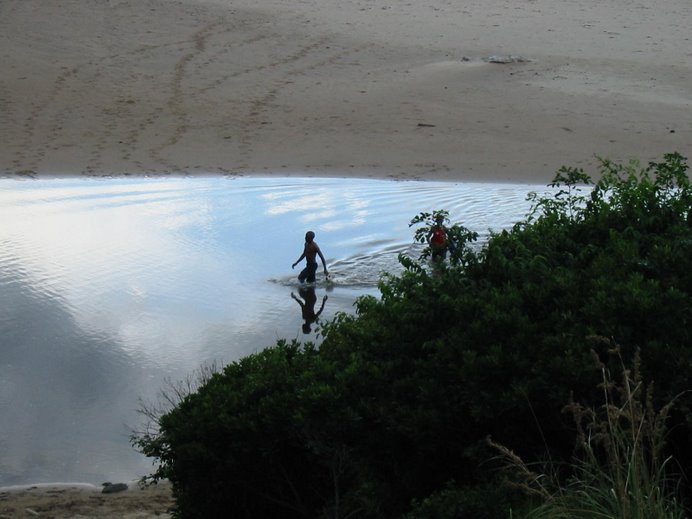
Ntlangano forms part of a very extensive wilderness system, the latter occupying much of the area between Mthatha and KwaZulu-Natal, South Africa. The Tsitsa drainage area starts northwest of Maclear; the Tina, Mzimvubu and Mzintlava – all of which converge close to the Tina-Tsitsa confluence – drains the entire area stretching well past Kokstad and Matatiele on the east. In other words, most of the southeast escarpment boundary with Lesotho ultimately drains into the Mzimvubu through Port St John’s.
These four great rivers develop into deeply incised river valleys that converge between Flagstaff, Lusikisiki, Libode, Tsolo, Qumbu and Ntabankulu. Despite the preponderance of villages on the ridges above these valleys, much of the area is remote, inaccessible wilderness. It invites a sense of mystery and the unexplored. It stands to reason that this area contains a vast biome of interesting, often endemic, plant life. It is a biological point of attraction.
The first picture in the sequence shows Tsitsa Falls. The one below is indicative of the terrain. Much of the river is crowded-in with inaccessible cliff-face, which generally drops around 600m.
The valley floor is repeatedly restricted by cliff-face, and the river is too deep to cross. The surrounding vegetation – dominated by Euphorbia and thorny thicket – is too dense and unforgiving to allow ready bypasses, even should the gradient permit for that.
Down here there’s an eerie coastal feel – lots of white sand, smooth rocks, and an almost coastal vegetation feel. Almost. There’s still an abundance of Euphorbia and assorted thorn bush. The path meets the very occasional homestead – clearly people who have defied the old betterment resettlement and moved back to ancestral homes (in the process compromising access to infrastructure such as roads, clinics, schools, taxis).
Above is the Tina river, and below is the gentler Tina valley. This area generally drops around 600m as well. The Ntlangano valley has long been an outlaw area, and there are historical accounts (around 90 years ago) of youths returning from the mines and being a law unto themselves in the valley. Stock theft repeatedly thrived in this dense, difficult to penetrate landscape.




















 Taken at Mtentu, Wild Coast, South Africa. An Australian company
Taken at Mtentu, Wild Coast, South Africa. An Australian company The community-owned and managed Amadiba Horse & Hiking trail traverses the coast from Mzamba to Mtentu.
The community-owned and managed Amadiba Horse & Hiking trail traverses the coast from Mzamba to Mtentu.
